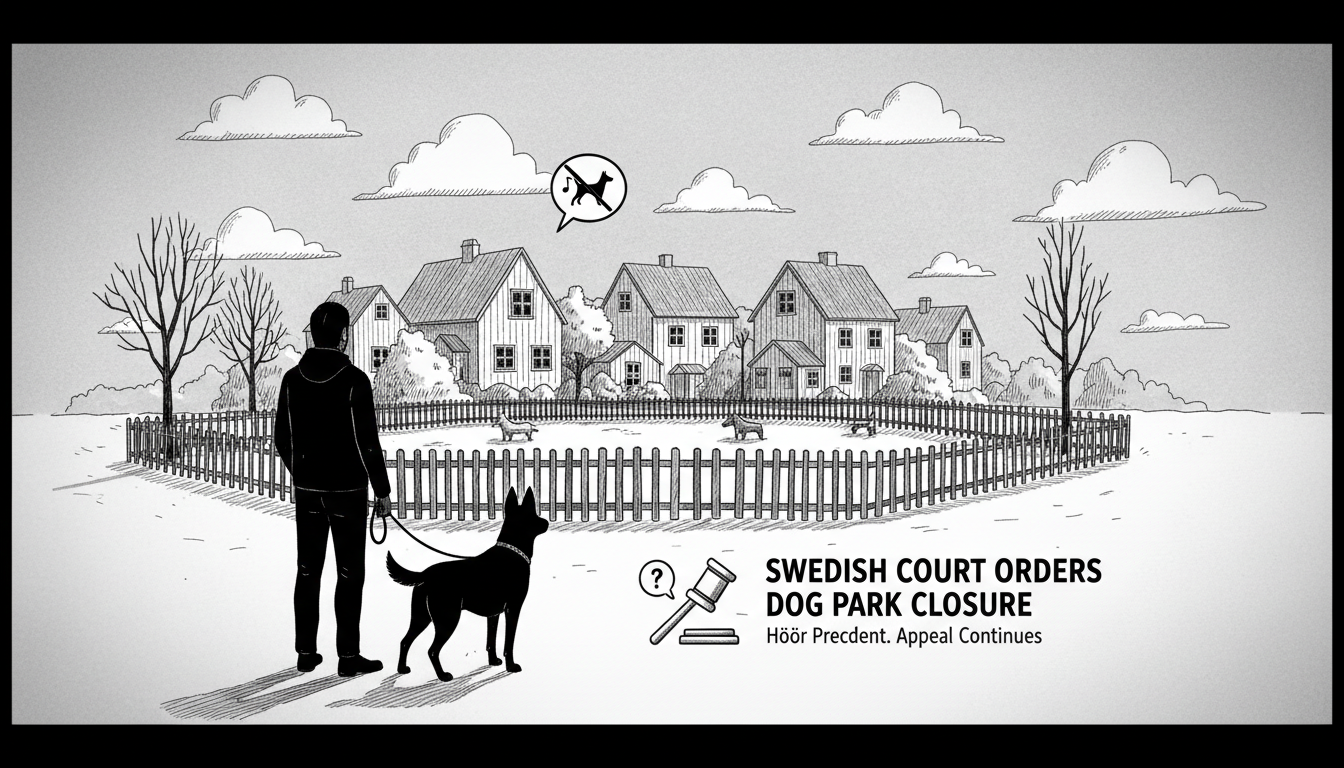A Swedish environmental court has ruled in favor of a Höör resident who fought against a municipal dog park installed near her home. The decision highlights ongoing tensions between community development and residential peace in Scandinavian neighborhoods.
Ida Dahlgren described how her family's daily life changed when the dog park opened just seven meters from her property line. She explained they sometimes had to interrupt work meetings because they couldn't hear participants through headphones. The noise from barking dogs made normal activities difficult.
The Karlslund dog park between Sätofta and Höör was one of three such facilities in Höör Municipality. Dahlgren researched similar legal cases and organized a neighborhood petition against the facility. Her efforts culminated in the Land and Environment Court ruling that the municipality violated applicable laws.
This represents a classic Scandinavian conflict between municipal services and residential rights. Swedish planning laws prioritize both community amenities and living environment protection. The case shows how even smaller municipalities must follow national regulations.
Dahlgren expressed relief at the decision. She emphasized the importance of setting an example that all municipalities should follow existing laws. She hopes the area will return to being a green space with a sledding hill for children.
Höör Municipality has appealed the ruling. Community Development Director Rolf Carlsson stated finding alternative locations for dog parks presents challenges. The municipality must balance different resident needs while complying with court decisions.
Local dog owners who used the facility expressed disappointment about the closure. They hope the municipality will establish a replacement dog park elsewhere. Several owners declined interviews but confirmed they valued the community space.
This case reflects broader Nordic trends in urban planning conflicts. As Scandinavian communities grow, municipalities face increasing pressure to provide amenities without disturbing residential areas. The outcome could influence similar disputes across Sweden.
The legal process continues with the municipality's appeal. Both sides await the next court's decision about the dog park's future. The case demonstrates how Swedish courts mediate between individual rights and community services.
Scandinavian property law strongly protects residential environments. This protection sometimes conflicts with municipal development plans. The court's decision reinforces that even well-intentioned projects must comply with noise and distance regulations.
International residents in Sweden should note this case shows the legal system's responsiveness to neighborhood concerns. The outcome suggests property rights generally receive strong protection in Swedish courts, though each case depends on specific circumstances.

